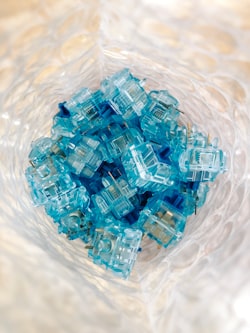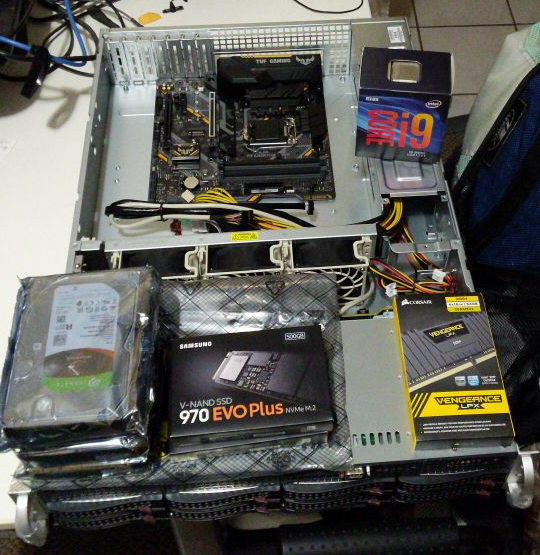Redundancy Redundancy

This particular saga and the ones that will follow began with a simple sale on meh.com. A few months ago they had as their daily deal a motherboard for $35 USD so I snagged it not knowing what I would do with it. I began putting together a list of components I wanted to purchase with it, again not knowing exactly what I wanted to do it it.
I knew I wanted to add some redundancy to my self-hosted/homelab setup which is built around a QNAP NAS and a single Proxmox hosts. In light of recent security issues with QNAP, I decided it was also time to start looking for alternatives. This was more about not relying on a specific vendor than the nature of security issues themselves.
Eventually I settled on adding another Proxmox host in order to build a cluster, but this time instead of a single 500GB NVMe I would build it out with NVMe and NAS grade hard drives. I also wanted to get a proper server chassis on railswith hot-swappable drive bays.
Here’s the list of components:
- TUF B365M mother board
- Intel i9-9900
- 64GB DDR4 2666
- 2x 50GB NVMe M.2
- 4 8TB Seagate IronWolf drives
- Supermicro CSE-825TQ-563LPB 2U Rackmount case

As I finished the build and installed the latest version of Proxmox, it occurred to me that the rack I had only had two posts and was open.
One of the attractions of buying a server chassis with rails was being able to slide it out to access inside with unracking the devices around it. The rails were going to require 4 posts.
Noise was somewhat of an issue before, most of it from the UniFi networking equipment, but it was manageable. The new server chassis with its three chassis fans and spinning hard drives was going to be much louder than the first build. I needed an enclosed cabinet.
Off to Altex Electronics I go to see what they had in stock. I was looking for something that was about 24U with an adjustable depth of between 26" and 33". I ended up spending way over my initial budget and ended up with a 42U TrippLite Smart Rack that comes with locking, removable side panels. At least there’s room for growth, eh?
It was fun getting it home, but I did and was able to get everything transferred from the old rack to the new in about 1/2 a day. With the exception of a side panel getting knocked over and breaking a latch, it went pretty smoothly. Hopefully getting a replacement latch won’t be a problem.

What a cluster!
With both Proxmox hosts up and running, it was relatively simple to create a cluster on the first host and add the second. I will, however need to add some shared storage and a quorum voter device in order to achieve high availability.
What’s Next?
The next task is to allocate the 500GB NVMe drive and the 4x 8TB IronWolf drives. I’m thinking I will create a ZFS pool because it gives the best flexibility and options for allocating the storage.
I’m looking at what needs to be migrated off of the QNAP:
- Valheim server
- Unifi Controller
- SMB/NFS shares
- iSCSI LUN for Windows 10 VM
- Persistent volumes for Kubernetes cluster
There no sense in trying to tackle it all at once, but eventually the goal is to shutdown the QNAP and move the 2x 4TB IronWolf drives into the original Proxmox host so it can have additional local storage. Then I need to decide on what kind of distributed filesystem I want to use for shared storage between nodes.
Join us on the #lachlanlife Matrix channel if you have any questions, thoughts, or tips to share from your own self-hosting or home lab projects.